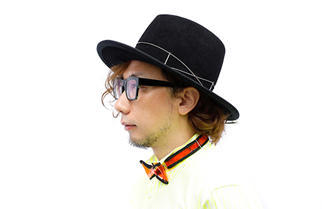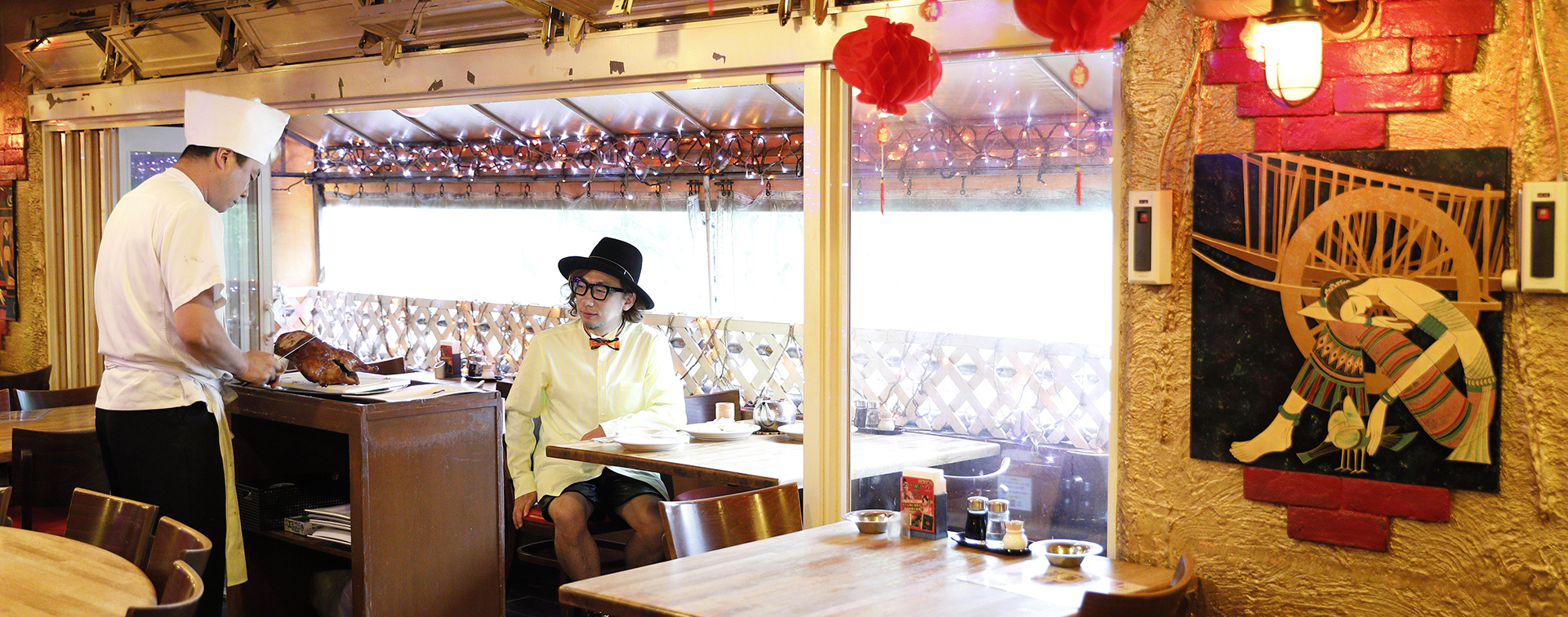

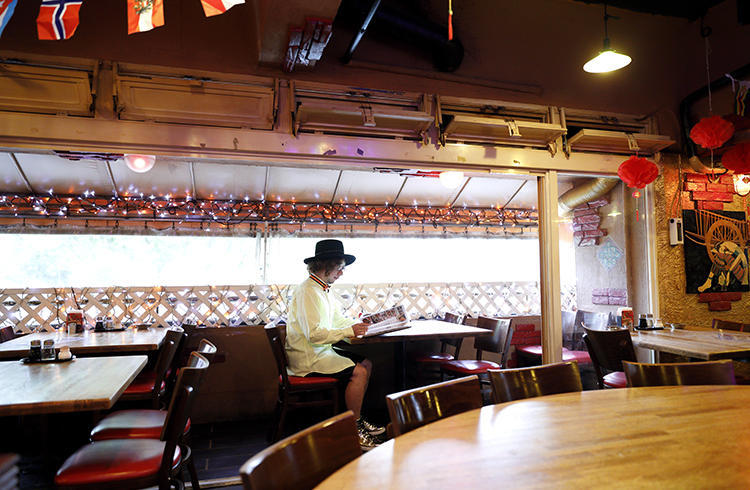
INTERVIEW
97
Sebastian MasudaArt director / Artist
Kawaii is a concept, and not about things
An exhibition to show how “kawaii” pop culture has spread worldwide
The “kawaii” (cute) culture in Harajuku is now known worldwide. Since we entered the 21st century, perhaps kawaii is the most well-known Japanese word used around the world. Working both in Japan and abroad, art director and artist Sebastian Masuda has made vibrant creations that are the quintessence of kawaii in a wide range of genres including art, fashion and entertainment. In this interview, we asked him about his starting point as a creator, the activities he has undertaken so far, and the potential of the kawaii culture in Roppongi.
The things that lie beyond kawaii
My starting point for expressing myself was hardcore punk and noise rock - the so-called industrial music which I loved. Another large influence was a certain contemporary artist whom I worked for as an assistant when I was around 20. He was known then for his very extreme expressions; he made things that were edgy and that reflected the times.
Being young at the time, I wasn't sure whether the artist was making art or plays, but I was simply drawn to his world and assisted him. As a result, I was given a good motivation to explore my own ways of self-expression.
I kept asking myself, "What for me, is extreme? What is madness?" Then one day, my attention was turned to children and the Hello Kitty character. Both are unquestionably cute. But there are moments when children can be cruel, such as with insects, for example. A child playing in a sandpit might squash an ant he or she finds there. As for Hello Kitty, she has no mouth, and looks extreme in a way. I felt that radicalness and madness were what existed beyond kawaii.
The unreceptive response to my artwork
When I was 22, I founded my own performance group and we put on performances that combined kawaii and madness. In my view, the way I expressed myself then was exactly the same as the way I express myself now, but I received considerable criticism from people in the art world and the theater world.
Maybe the criticism was partly due to the mood of those times. In the beginning of the 1990s, "mode" fashion was in full bloom. People were unreceptive to my works which featured bright colors and expressed a sort of childish madness.
The colorfulness of my works comes from my memories of the shopping district in my hometown. As a child, I was always hungry when I came back home from school. My parents owned a kimono shop and our dinner time was late. So every day, my parents would give me 100 yen and I would go to the snack shops and toy shops in the shopping district.
It was the Showa period then, and as you know, the snacks and toys during that period had very colorful packaging. Those colors are still impressed on my mind and make me excited. I had big expectations about the future then, and even now I cannot forget the scenery around me which seemed to sparkle. Now I want to share those things with many people. Such feelings are probably why I use bright colors in my works.
The long history of Japan's original kawaii culture
Since my works were not accepted by the art world nor the theater world, I tried to solve the problem by setting up in Harajuku in 1995 "6%DOKIDOKI"; it was a shop and also a place for self-expression. I opened the shop because I thought that unlike art and theater which can only be shown for a limited time, a shop would allow a lot of people to see and understand my works. I chose Harajuku as the location because as a teenager, I used to go there almost every week, and I loved its free atmosphere that seemed accepting of anything.
The things sold at "6%DOKIDOKI" and other shops in Harajuku as well as the activities that went on there in the '90s gave birth to the kawaii culture of Harajuku. As that culture spread overseas, my form of self-expression began to be accepted by the fashion and the entertainment world. It took roughly 20 years for me to reach that point.
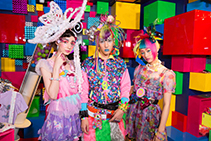
6%DOKIDOKI
A shop and brand that Sebastian Masuda set up in Harajuku in 1995 and which is popularly known as "Rokupa." Under the concept of "sensational lovely", which Masuda says refers to things and activities that are excessively cute, 6%DOKIDOKI sells original and selected goods, and also organizes various events, presenting the latest trends in Japanese pop culture. Kyary Pamyu Pamyu used to be the shop's regular customer, and when the singer made her debut, Masuda created the art for her music videos and concerts, and also directed her performances. Aside from the physical store, there is an online store for both the Japanese and overseas markets.
http://dokidoki6.com
With Harajuku's kawaii culture being recognized overseas, I am finding it easier to have my voice heard; at last I am beginning to have an environment where I can go back to making artworks which in the past were not recognized. Roppongi is an area where the embassies of the world are gathered and I think it's the most suitable place in Tokyo to present my art.
There is actually quite a lot of greenery in Roppongi. In 2013, I created a large Christmas tree that was installed at the Roppongi Hills observatory. Last year, my solo exhibition "YOUR COLORS" was held at the Roppongi Hills A/D Gallery, and I also exhibited my work at the "Create Your Own Original Doraemon" exhibition at the Mori Arts Center Gallery in Roppongi Hills. The themes of the exhibitions were different, but at the root of everything I make is the concept of kawaii.
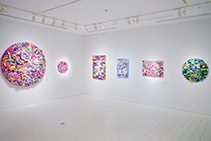
"YOUR COLORS" exhibition
An exhibition of Masuda's recent well-known works including the "Colorful Rebellion" series which consist of reassembled colorful materials, and the art project "TIME AFTER TIME CAPSULE" showing Masuda's recent major works. During the exhibition period, original goods dubbed "Sebastian Masuda ART" were sold at the nearby Roppongi Hills Art and Design Store. The exhibition was held Oct.20 (Fri) - Nov.12 (Sun) 2017 at Roppongi Hills A/D Gallery.

"Create Your Own Original Doraemon" exhibition
This was a "sequel" exhibition following a Doraemon exhibition that toured 13 places nationwide from 2002 to 2006. A total of 30 Japanese artists made their own unique version of the manga character Doraemon, Masuda created a huge three-meter-high Doraemon made up of more than 10,000 pieces. Called "Saigo no uepon (the last weapon)", the work was installed at the entrance of the exhibition venue. More details can be found on the exhibition website. The exhibition was held Nov. 1 (Wed) 2017 - Jan.8 (Sun) 2018 at Mori Arts Center Gallery.
http://thedoraemontentokyo2017.jp
For me, kawaii is not about physical things, but is essentially a way of thinking -something emotional. If I had to explain it in words, I would say that kawaii is about creating a small universe within oneself. I believe that the kawaii culture we see now did not suddenly appear in Harajuku -it is something original in Japan which has a long history. I hope that many people will come to understand that, and for that end, I am currently studying the history of kawaii culture.
In the Japanese culture, there is the concept of "wabi-sabi" (rustic elegance and simplicity) which has been handed down from the old times, but I feel that we should pay more attention to the concept of "hare" (festivals and celebrations).

Reclaiming the "hare" aspect that has been cast aside
In the past, the special days for festivals and traditional events were referred to as "hare." People enjoyed these public events by wearing extravagant clothes decorated with auspicious patterns and motifs of plants and animals. Going to the kabuki theater was also a hare event. The hare aspect was firmly rooted in Japanese culture until the Taisho era.
But when the World War II later erupted, much of the Japanese culture was changed. The culture was reset and recreated. And in that process, it seems to me that the concept of hare was cast aside, while the wabi-sabi concept was carried on as a notable feature of the Japanese spirit and culture.
I feel that the hare concept which was cast aside is something that is actually important which will help people move in a positive direction. The concept of kawaii is certainly connected to the hare culture. I would like to study history more to verify this. Japan has suffered a series of difficulties such as earthquakes and disasters and I would like to give people as much positive energy as I can by creating kawaii things.
My wish is to understand the roots of kawaii and to hold an exhibition to properly show why the kawaii culture is being praised as a new concept from Japan. It would be nice if the exhibition could be held in Roppongi. There are many embassies and foreign companies in Roppongi, and people here have a strong receptiveness toward Japanese art. An exhibition in Roppongi will make it possible to inform many people from abroad about the kawaii culture that is spreading worldwide.
"Kawaii" to change the environment
The word "kawaii" is now being used in many countries to describe Japanese pop culture. My feeling is that this movement spread from the West Coast of America. There already was a home-grown aesthetics there for pop and crazy-colored things - as can be seen in singer-songwriter Katy Perry's famous music video "California Gurls." This was very compatible with Japan's kawaii culture and the trend-conscious girls in the West Coast began mixing in elements of Japanese fashion, popularizing the style. In contrast, in the East Coast where there tends to be more discriminatory attitudes based on race, religion and gender, there seem to be many people who use the kawaii concept as a means to change the environment they are in. Kawaii does not refer to appearances or shapes, but is a philosophy and concept... so in a sense, I think the essence of kawaii has spread more quickly in the East Coast.
Katy Perry
Born in 1984 in California, U.S.A. At age 5, decided to become a singer after being inspired on hearing Queen's "Killer Queen". Debuted with a major label in April 2007. Released album "Prism" in October 2013 which reached number one on the Billboard Hot 100. Wears distinctive costumes of bright colors that have elements in common with the Japanese kawaii culture, and has gained respect form the fashion world. Is known to be a Japanophile and has a tattoo of Hello Kitty.
Speaking of New York, I am currently a visiting scholar at New York University. I'm studying the relationship between American youth culture and Japanese artists, and how contemporary kawaii culture is tied to that.
Japanese artists in the 1960s and 70s had an influence on American youth culture, particularly on the club scene. I believe the influence they exerted is partly why kawaii culture is being so earnestly welcomed in America. I think it's possible to explain this in a logical way and that's why I am studying the history of those times.
Working in New York for the next 10 years
Next year, I plan to move half of my base to New York to do activities there. I'm searching for a studio at the moment. There are many reasons for deciding to go to New York, but the foremost reason is that when doing art activities in Japan, the scale of my works tends to get small, and I wanted to avoid that. I don't like the fact that the scale of my works is being constrained by factors such as budget issues and people's requests. I want to directly transform the ideas in my mind into reality. I want to keep the scale of my works big. My desire became stronger and I decided to move my place of work abroad.
I chose New York because I took my age into account. I'm 48 and I feel that I have 10 years left to push myself mentally and physically, and still stay fresh as an artist. And when I wondered where my activities should be centered, I thought it should be New York which I dislike. (laughs)
I like New York as a place to visit on a trip - it's a fun and stimulating city. But when you live there, the city feels like a boxing ring where you are forced to fight in open weight bouts with all the strong boxers who have come from around the world. You frequently get hurt and suffer big injuries. But I think that is precisely what makes it worthwhile to fight as an artist.
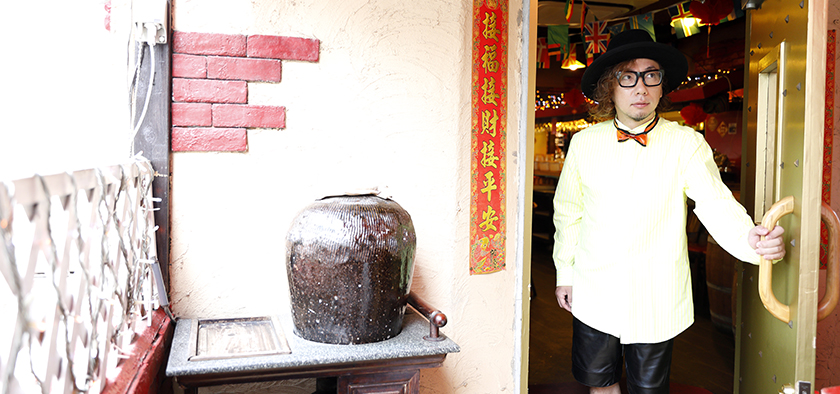
The impressive pioneering spirit and infrastructure of the Netherlands
If I could choose a place to just live, it would be Amsterdam in the Netherlands. Last year, I stayed there for about three months after being appointed Japan Cultural Envoy by the Agency for Cultural Affairs. The whole culture of Amsterdam is interesting, and above all, I like the values of the people.
The Dutch have a fundamentally pioneering spirit. There was even a time when the Dutch settled in New York, and the city was called New Amsterdam. I sense in the people the willingness to explore the outer world.
Maybe this is not quite related to the pioneering spirit, but the Netherlands is a country with solid infrastructure. For example, they have fine facilities for growing food. The longer it takes for produce to be transported from the farm to the dinner table, the bigger the burden on the environment. As a way of reducing that burden, a unique experiment is being undertaken in the Netherlands: in the big cities where there are no farming land, vegetables and fish are grown in abandoned buildings and supplied to people in the neighborhood. It's so intriguing.
Windmills are another part of the infrastructure in the Netherlands. For a long time, the Dutch used windmills to pump out seawater, and even now, when the technology for other methods has advanced, they still spend five years making a windmill. I find that character of the Dutch people very attractive. When the windmill is completed, they use it to grind flour to make bread. It's a bit incredulous, isn't it? You think, "Oh"! (laughs) I like the way the Dutch people place value in infrastructure.
Art can make visible what you want to say
When I was Japan Cultural Envoy, I had an atelier in a former shipyard where all the ships of Amsterdam used to be built. I stayed there for about two months working on a project called "Escape From Anonymous(e)." I drew rough sketches on pieces of paper which I would give to strangers saying, "This will be fun, so please participate." I wanted to see how much we could do.
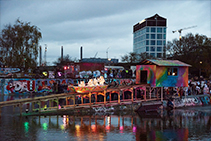
Escape From Anonymous(e)
An outdoor performance called "Escape From Anonymous(e) Improv Orchestra for the World-" was held in Amsterdam on Nov. 18, 2017. The performance was made by actors wearing mouse masks, musicians playing instruments in line with the play's narrative, and performers in colorful costumes, while the spectators wore white masks.
I thought of doing this project because at that time, I was feeling lost. After holding a solo exhibition in New York in 2014 and debuting as an artist, there was increasing talk of business - talk about how much my works were worth, and how much they sold for, and I felt as if I had become a luxury interior craftsman.
I was thinking to myself, "Shouldn't artists be people who send out messages through their work?" I was in a dilemma, and by doing this art project, I wanted to make clear to myself what I wanted to do through art.
This project was about mice getting away from a sinking ship. I wanted to draw parallels between the social situation in Europe and the behavior of mice which can quickly notice a sinking ship and manage to escape. I explained this person-to-person and the staff eventually totaled a hundred people, while a thousand people came to watch, and we were able to put on a very large-scale performance. The kawaii culture expands when it is mixed with local elements; with this project we were able to blend in the culture of Amsterdam and create something kawaii that was unique to the place.
Doing this project let me reconfirm the fact that art has the power to engage people in creativity. I decided then that I would place my faith in its power and go ahead with making art. I had been thinking that if I didn't get that feeling of conviction, I would continue on my path as a luxury interior craftsman. (laughs)
Art can make what you want to say visible. For the next 10 years, I want to visualize the messages I wish to send to people. Whether I will be able to eventually show my works in Tokyo remains to be seen.. if there is an opportunity, I would love to do something in Roppongi.
Editor's thoughts
There are people - both men and women - who describe nice things they see such as clothes, accessories, interior goods, and ornaments with the word "kawaii." For me, kawaii things used to be the familiar things that can be found in everyday life. However, after interviewing Masuda-san and learning about his activities, I feel that I have gained a new, more nuanced perspective on the kawaii culture. Masuda's statement that kawaii is a concept, and not about things, has left an impression on my mind. Masuda-san also made me reconfirm the infinite power of art. Perhaps one of these days, I might venture to ask him about the knowledge he had gained from his studies at New York University. (text_nanae_mizushima)
RANKING
ALL
CATEGORY




